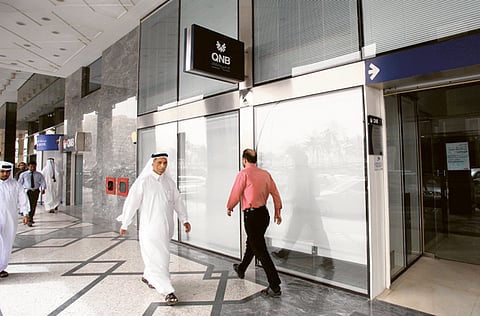Liquidity in the Gulf banking system goes beyond price of oil
Economies could still thrive even when crude was down

It's not an unreasonable idea that banking liquidity and economic growth in the Gulf region would move roughly in line with the countries' oil receipts, and therefore oil prices.
Equally, the phenomena of boom and bust, of excess and shakeout, are familiar to all, and especially so in a quasi-currency bloc where interest and exchange rates are essentially pegged, and wealth accumulation relates so predominantly to the energy resource.
For the banks, however, there are refinements and distinctions to be drawn in their experience of lending, even beyond the respective risk management practices of individual institutions.
Banks here are said to be strong enough in terms of capital adequacy, certainly to participate in and facilitate economic recovery, but weaker in other respects, with non-performing loans (NPLs) and asset quality a closely monitored, ongoing concern.
Two years ago the IMF published a paper identifying these systemic characteristics. In particular, it indicated that asset quality tended to evolve in tandem with oil prices (as per the said assumption), besides mentioning the banking sector's vulnerabilities to concentration risk and liquidity management issues. Yet that volatility was offset by the bolster of capital ratios, so that the global financial crisis from 2008 imparted only moderate effect.
The Gulf, in other words, lived to some extent in its own world, its own bubble even.
As oil prices rise again, will the same old story apply, or should we expect a new paradigm?
Rating agencies
The IMF's judgment will be re-issued sometime, but the rating agencies periodically have something to say, as do other analysts, and bankers themselves. As a matter of interest, it's prudent to enquire, as the current cycle unfolds.
In their latest regional assessment Fitch Ratings believed that problem across the GCC have peaked, and expected generally lower impairment charges in 2012.
There would be some loan growth this year, as confidence improves, with significant liquidity in most markets, and capital levels not generally a constraint.
The relevant background was of the oil price at over $100 (Dh367) per barrel generating returns comfortably above budget requirements, with government-sponsored infrastructure projects in hand.
Fitch's subsequent research note last week argued that, though the UAE's operating environment is not immune to global pressures — negatively affecting the likes of trade, tourism and services, so that some loans may re-emerge as non-performing — "positively, levels of capital and healthy core earnings provide banks with a solid cushion".
The conundrum, then, is that higher oil prices might benefit the region in terms of an immediate windfall, but, to the extent that they persist, they may produce a feedback cost by way of declining global fortunes. And that could be happening now.
Senior director Philip Smith told me last week, "I would say that there is limited connection between asset quality and oil prices. Oil revenues do have a significant impact on liquidity in the banking system, [and] the economic cycle will be affected, but it is debatable whether this is specifically due to oil revenues or rather general confidence in the economy."
Structural shifts
A recent report by AT Kearney referred to the "cautious optimism" returning to the banking market at this point. When asked about the sector's assumed, regular cyclicalities, however, Cyril Garbois, partner at the consultancy, highlighted overriding secular, structural shifts.
"Our view is that the financial crisis stressed the de-correlation between the oil price and the asset quality of banks. It is a fact that NPLs increased dramatically during a period of high oil prices … explained by the diversification of the Gulf economies and the increased integration in the global economy," he ventured. Globalisation strikes again.
So the "crude" theory might be considered debunked. "The correlation between oil prices and asset quality is arguably a little tenuous," says Suresh Kumar, veteran banker, politely, but rather dismissing the notion. The banking system reflects the economy, particularly the private sector, trade and tourism, he says. But "where oil prices have much more relevance is [in] the ability of [governments] to invest in capital and social expenditures". Otherwise the oil receipts tend to go into state-related and central bank coffers such as sovereign wealth funds and FX reserves.
"Liquidity in the banking system, contrary to popular belief, is not so connected to oil prices," he maintains, particularly as public sector budgets don't reflect oil prices per se but national budgetary planning and assumptions instead.
On that basis, even Dubai — without so much oil, but apparently the beneficiary of regional liquidity in the past — may not be as dependent as some suspect. It thrived even when oil prices were down, Kumar points out.
That's from someone with more than twenty years' experience in the region. It certainly challenges the knee-jerk idea that banking in the Gulf is really about how much its oil-producing countries are ready to dish around. Perish that thought.
Sign up for the Daily Briefing
Get the latest news and updates straight to your inbox



